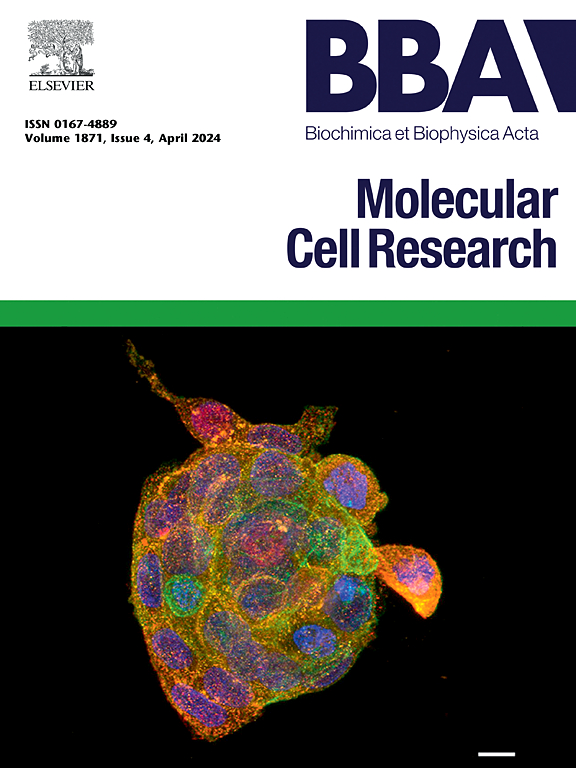VRK2 kinase pathogenic pathways in cancer and neurological diseases
IF 4.6
2区 生物学
Q1 BIOCHEMISTRY & MOLECULAR BIOLOGY
Biochimica et biophysica acta. Molecular cell research
Pub Date : 2025-04-03
DOI:10.1016/j.bbamcr.2025.119949
引用次数: 0
Abstract
The VRK2 ser-thr kinase, belonging to the dark kinome, is implicated in the pathogenesis of cancer progression, neurological and psychiatric diseases. The VRK2 gene codes for two isoforms. The main isoform (VRK2A) is mainly located in the cytoplasm, and anchored to different types of membranes, such as the endoplasmic reticulum, mitochondria and nuclear envelope. The VRK2A isoform interacts with signaling modules assembled on scaffold proteins such as JIP1 or KSR1, forming stable complexes and blocking the activation of regulatory signaling pathways by altering their intracellular localization and the balance among them. VRK2 regulates apoptosis, nuclear membrane organization, immune responses, and Cajal bodies. Wild-type VRK2 is overexpressed in tumors and contributes to cancer development. In cells and tumors with low levels of nuclear VRK1, VRK2 generates by alternative splicing a shorter isoform (VRK2B) that lacks the C-terminal hydrophobic tail and permits its relocation to nuclei. Furthermore, rare VRK2 gene variants are associated with different neurological or psychiatric diseases such as schizophrenia, epilepsy, bipolar disorder, depression, autism, circadian clock alterations and insomnia, but their pathogenic mechanism is unknown. These diseases are a likely consequence of an altered balance among different signaling pathways that are regulated by VRK2.
求助全文
约1分钟内获得全文
求助全文
来源期刊
CiteScore
10.00
自引率
2.00%
发文量
151
审稿时长
44 days
期刊介绍:
BBA Molecular Cell Research focuses on understanding the mechanisms of cellular processes at the molecular level. These include aspects of cellular signaling, signal transduction, cell cycle, apoptosis, intracellular trafficking, secretory and endocytic pathways, biogenesis of cell organelles, cytoskeletal structures, cellular interactions, cell/tissue differentiation and cellular enzymology. Also included are studies at the interface between Cell Biology and Biophysics which apply for example novel imaging methods for characterizing cellular processes.

 求助内容:
求助内容: 应助结果提醒方式:
应助结果提醒方式:


